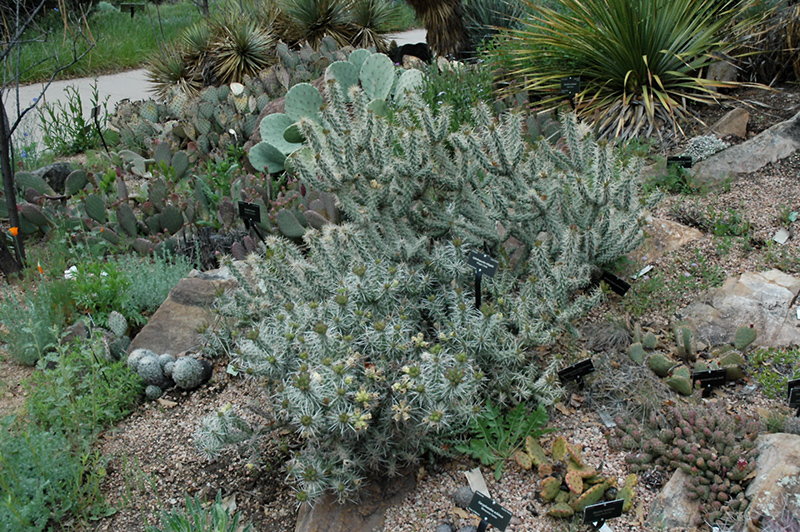Whipple Cholla
Description
A unique variable shrub, featuring unusual, stem-like, cylindrical growth; forms woody central trunks with age; stems topped with lovely yellow-green flowers in spring; very spiny so handle carefully; more frost tolerant than other chollas
Landscape Attributes
Whipple Cholla is a succulent evergreen plant with an upright spreading habit of growth. It commonly grows as a shrub-like plant with multiple 'branches' and stems. As a type of cactus, it has no true foliage; the body of the plant is wholly comprised of a linked series of spiny bluish-green narrow cylindrical segments which are connected together to form the branches of the plant. With age, this plant will eventually develop a woody gray 'trunk' at its base.
Whipple Cholla is recommended for the following landscape applications;
Planting & Growing
Whipple Cholla will grow to be about 4 feet tall at maturity, with a spread of 6 feet. It has a low canopy. It grows at a medium rate, and under ideal conditions can be expected to live for approximately 30 years.
This plant should only be grown in full sunlight. It requires an extremely dry, well-drained growing location, and will usually die in standing water. It is considered to be drought-tolerant, and thus makes an ideal choice for xeriscaping or the moisture-conserving landscape. Like most succulents and cacti, this plant prefers to grow in poor soils and should therefore never be fertilized. It is not particular as to soil pH, but grows best in sandy soils. It is quite intolerant of urban pollution, therefore inner city or urban streetside plantings are best avoided. This species is native to parts of North America.
Whipple Cholla makes a fine choice for the outdoor landscape, but it is also well-suited for use in outdoor pots and containers. With its upright habit of growth, it is best suited for use as a 'thriller' in the 'spiller-thriller-filler' container combination; plant it near the center of the pot, surrounded by smaller plants and those that spill over the edges. It is even sizeable enough that it can be grown alone in a suitable container. Note that when grown in a container, it may not perform exactly as indicated on the tag - this is to be expected. Also note that when growing plants in outdoor containers and baskets, they may require more frequent waterings than they would in the yard or garden.

